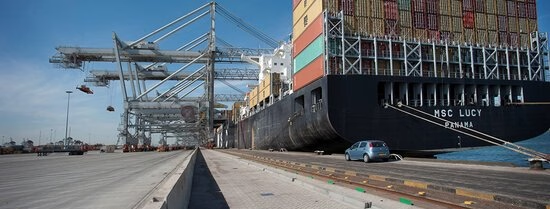Prof. Hein Klemann and Dr Ben Wubs
For more than a century there was a close link between the German and Dutch economies. Since the 1990s, however, as a result of major structural changes in the Ruhr district this narrow link has become difficult to prove statistically. Between the 1870s and 1990s the two countries often seemed a union in economic matters, which does not mean that the smaller Netherlands was unilaterally dependent on its bigger neighbour however.
The German interests in the Netherlands were also enormous, and its dependency on Dutch services was significant. By its political unification in 1871, Germany had become the major power of the continent, while the Ruhr-industry evolved into the industrial heart of Germany. Simultaneously, the Netherlands became economically vital for Germany because the most important industrial centre of North-Western Europe, the Ruhr district, lay immediately over the Dutch border and Rotterdam and its harbours at the Rhine mouth developed into the outports of this most powerful industrial centre.
In the late 19th century Germany’s heavy industry became increasingly dependent on foreign raw materials, in particular iron ore. The Germany heavy industry at the river Rhine became highly competitive as freight costs over water declined in comparison to freight costs by railway. As a result, it concentrated more and more around the river Rhine. In addition, the growing population of workers needed cheap grain from abroad. Location and facilities made Rotterdam into the most economic harbour for it's German hinterland. Transport via the largest Dutch harbour skyrocketed and turned into a vital condition for Germany’s trade and traffic. industry and mines needed an outlet for its finished products and coal. Therefore, Rotterdam evolved into the most important outport of the Rhine industry. In addition, the growing population of workers needed cheap grain from abroad. Location and facilities made Rotterdam into the most economic harbour for its German hinterland. Transport via the largest Dutch harbour skyrocketed and turned into a vital condition for Germany’s trade and traffic.
Objective
Because Rotterdam has played a key role in the development of the economic Dutch-German dyad over the last one and a half century a closer investigation into the specific role of Rotterdam business and its harbours seems opportune. For the city, the harbour and businesses in and around Rotterdam a historical research project into the origins, the growth and results of recent structural changes of the Dutch-German economic relations – in particular the relations with Ruhr district – is highly recommended. This research therefore aims to explore the development of the economic links between Rotterdam, Rotterdam business and the Rhine mouth harbours on the one hand, and the Ruhr district and Ruhr industry on the other in the course of the 1870-2000 period.
Subprojects
The project is divided in three subprojects:
- Coal, Iron Ore and Steel; Rotterdam Business and the German ‘Montan’ Industry, 1870-1940 (Joep Schenk, PhD student).
- Opting for Oil; Rotterdam’s Oil Harbour and the Move from Coal to Petrochemical Feedstock of the Rhine Industry, 1945-1970 (Marten Boon, PhD student).
- The Box and Rotterdam’s New Hinterland; The Rise of Container Transport and Globalisation, 1970-2000 (Klara Paardenkooper, PhD student).
Prof. Hein Klemann and Dr Ben Wubs will write the syntheses.
- Click here for more information about the project (pdf).
